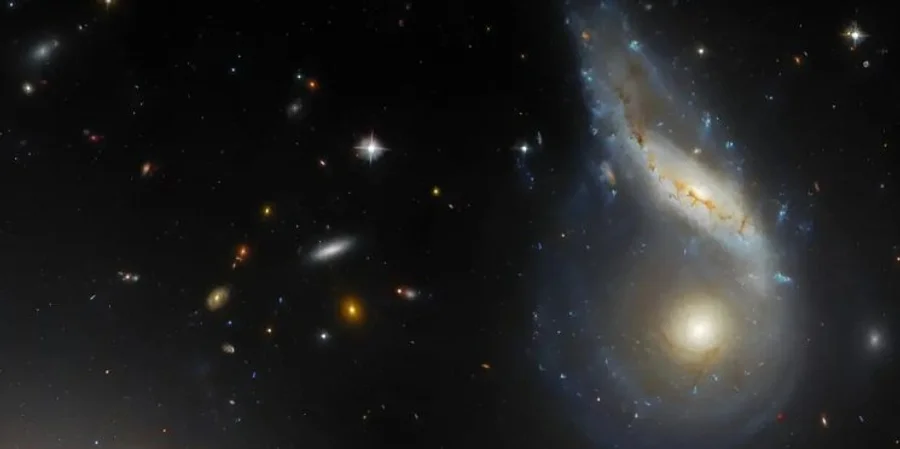
The latest photo taken by the Hubble Space Telescope captures the collision of two spiral galaxies, NGC 6040 and LEDA 59642, at a distance of about 570 million light years from Earth.
This incredible cosmic event looks spectacular and dynamic, but in fact it is quite slow and will take hundreds of millions of years.
The resulting structure of Arp 122 may eventually coalesce into a monolith of dust, gas, and dark matter.
Astronomers who have been studying galactic collisions for a long time note that such mergers can result in the formation of a single, more massive galaxy. Some hypotheses link these galactic turbulences to the process of star formation, but despite active research, much remains a mystery.
According to the Harvard Center for Astrophysics, 5 to 25 percent of all galaxies in our Universe are in the process of merging. The variety of forms of such mergers is the result of gravitational interaction.
Despite the abundance of material to study, astronomers admit that modern science knows very little about galaxy mergers.

